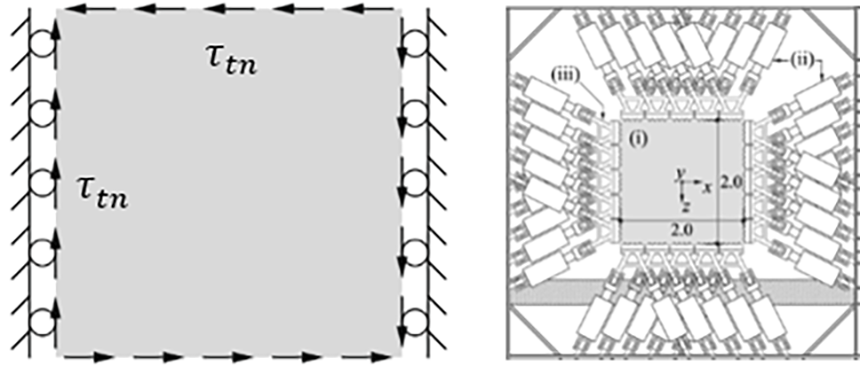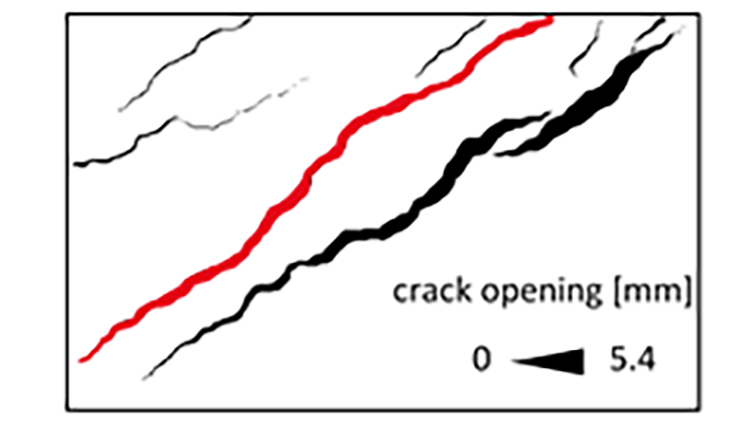Structural behavior of fibre-reinforced concrete under in-plane shear load
Author: Luca Angst
Language: English
Abstract
Fibre-reinforced concrete (FRC) offers a huge potential to replace conventional structural concrete in elements subjected to shear, such as bridge webs or shear walls. The load-bearing behavior of FRC structures, however, remains a topic that is not fully understood yet despite a vast amount of experimental and theoretical research. Different models exist describing the contribution of the crack roughness with its aggregate interlock (AI) phenomenon and the steel fibres to transfer stresses across cracks.
This thesis aims at combining different models to describe the post-cracking behavior of FRC panels. By formulating equilibrium at the crack face, the model predictions are compared, adjusted and validated against experimental data. For this purpose, large-scale shear panel tests has been conducted in the Large Universal Shell Element Tester (LUSET). LUSET allows an experimental setup being representative for structural shear elements such as webs of a girder bridge.
The analysis of the experimental data and the comparison to the models showed the limited applicability of the models to the crack behavior in large-scale tests. The models were calibrated against experiments that differ remarkably from the conducted experiments discussed in this thesis in terms of the experimental setup, size, load application and imposed constraints and hence fail to represent the crack formation and behavior observed in real structures. Although the waviness of a crack is not considered in the models, with the established direction-dependent approach a method was found to capture the so-called macro-interlock effect.
Out of all observed cracks within the experiments, only one crack was found to fulfill all criteria that allow for a significant and meaningful interpretation of the model predictions. For this crack, the superposition of the AI and the fibre model predictions showed satisfying accuracy when compared to the experimental data. The AI models were extended to take into account a direction change of the crack kinematics and the effects of crack opening and subsequent closure, thus representing the crack formation and behavior of real structures more accurately. Although the data analyzed in this thesis is very sparse, the models showed promising results and the drawn conclusions may serve as a guideline for further research projects in this field.




